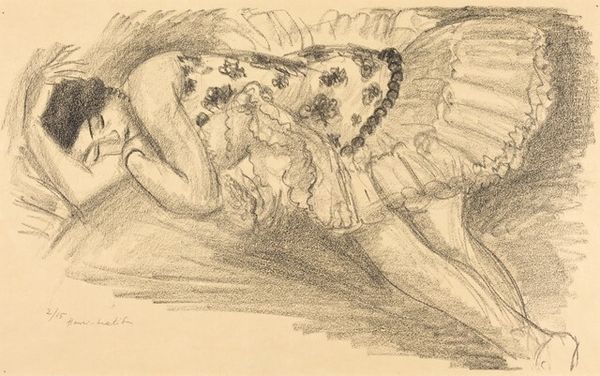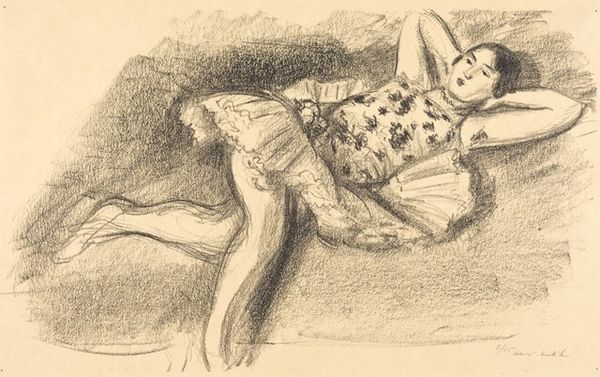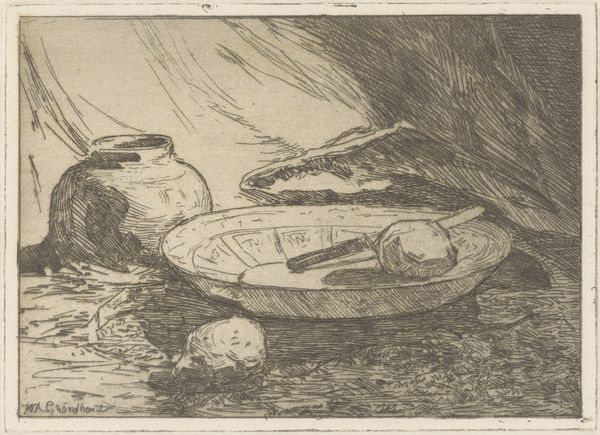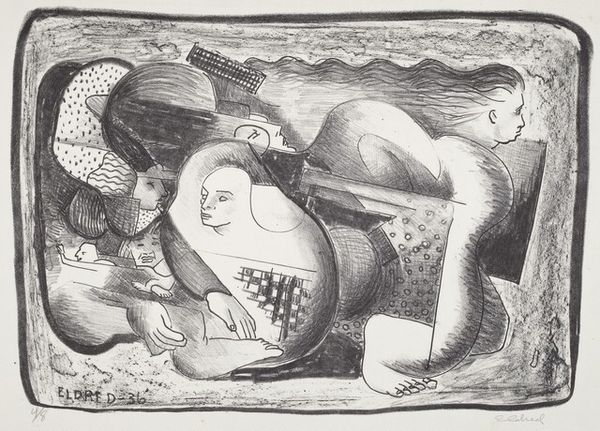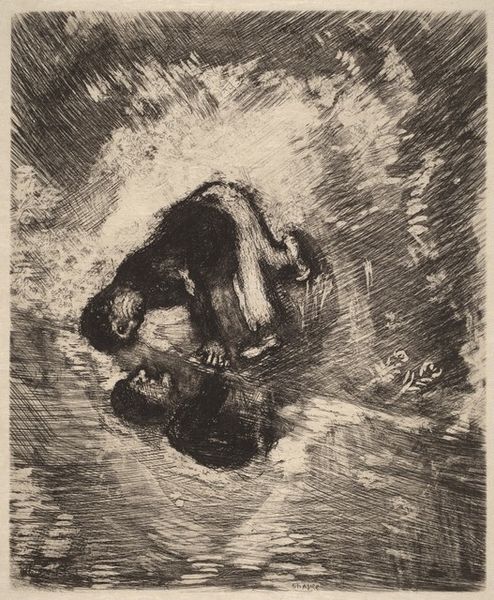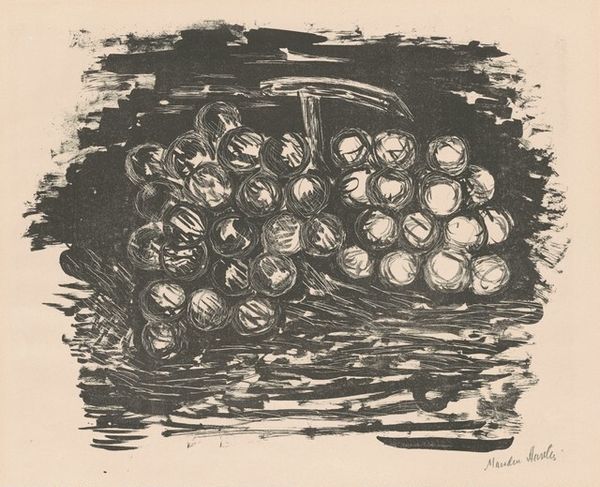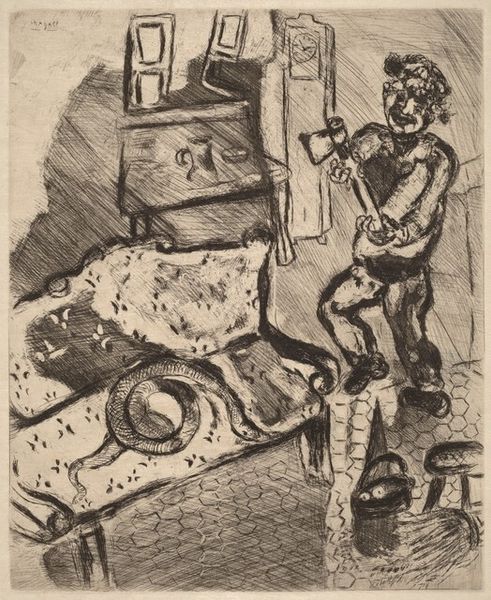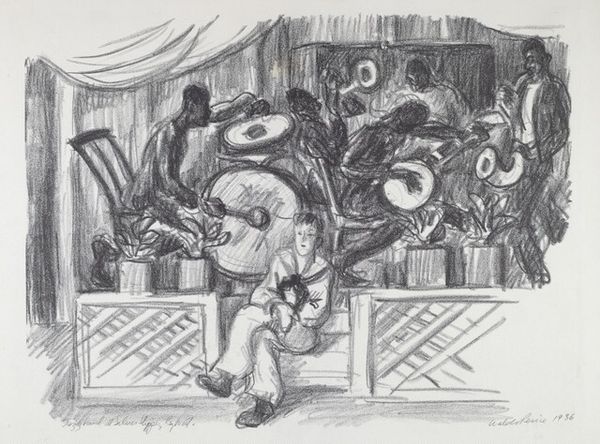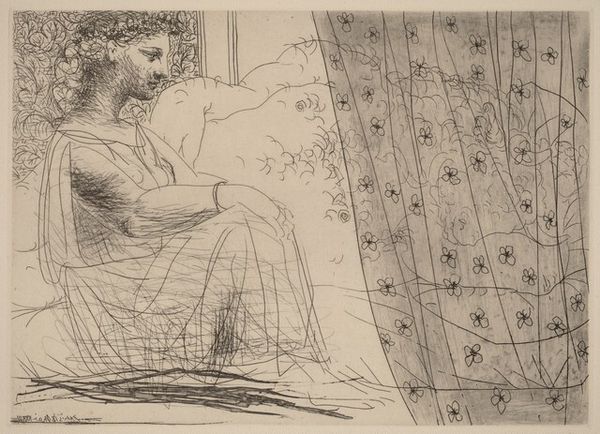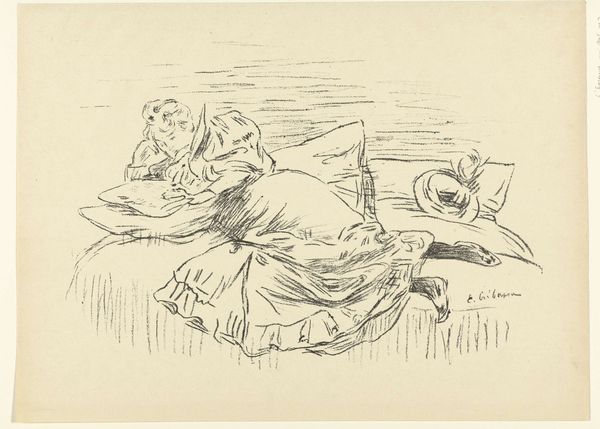
# print
#
figuration
#
nude
#
modernism
#
realism
Copyright: National Gallery of Art: CC0 1.0
Editor: This is William Brice’s “Interior III” from 1961. It's a print, and I find it incredibly unsettling. The figure is almost completely consumed by this patterned… blanket? And the interior seems so claustrophobic. What is your read on this? Curator: My immediate thought goes to the post-war anxieties permeating society during the early 60s. Do you notice how the figure’s vulnerability, exposed as a nude, contrasts with the oppressive geometry of the blanket's design? Editor: I see what you mean! Like a forced conformity. The patterns almost look like eyes staring out. Is it meant to reflect the socio-political pressure on individuals during that time? Curator: Precisely. Consider also the institutional aspect: art's role became increasingly tied to Cold War ideologies, with Abstract Expressionism promoted as a symbol of American freedom. Figuration, like Brice's work, presented a different, perhaps dissenting, view. The figure, rather than being free, is trapped within the domestic sphere. Do you agree with that assessment? Editor: Absolutely, it makes me think about how women artists, in particular, were navigating these expectations, even constraints. Thank you so much for that. Curator: And for me, seeing how a younger generation interprets historical anxiety is invaluable. It reaffirms art's power to provoke and reflect on the times it represents, even today.
Comments
No comments
Be the first to comment and join the conversation on the ultimate creative platform.
